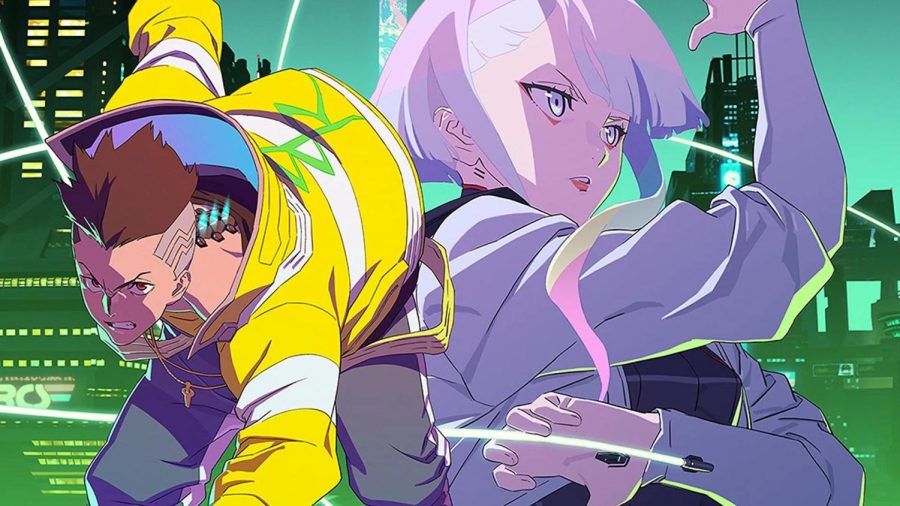Netflix’s ‘Cyberpunk: Edgerunners’ depicts futuristic dystopia in flashy animated setting
Cyberpunk Edgerunners brings flash and style to the original game series.
October 20, 2022
When “Cyberpunk 2077” released in late 2020, the game promised players the experience of exploring an expansive futuristic dystopian city with endless possibilities. Expectations for the title were high, but the game became infamous for its disastrous launch which consisted of bugs and glitches so bad that Sony delisted the game and retailers offered full refunds for anyone who purchased it. Mediocrity seemed like all that the franchise would amount to, but that changed when Netflix released “Cyberpunk: Edgerunners,” a 10-episode anime series based on the original game. While the game that the show was based on was widely panned and criticized on release, “Cyberpunk: Edgerunners” fully realizes the vision of the Cyberpunk world with an original story that received critical acclaim with 100% and 96% positive scores from critics and audiences respectively on Rotten Tomatoes.
Set in the futuristic Night City where criminal gangs running amok with cybernetic enhancements is the norm, the story follows David Martinez, a teenage misfit who struggles to live up to the expectations his mother has for him. As bystanders in a criminal shootout, David loses his mother, drops out of school and finds himself alone on the dangerous streets of the city. After being coerced into a criminal gang by the deadly hacker Lucy, the plot focuses on David rising through the ranks to make a name for himself in the undercity while progressively becoming a victim of the dystopian streets of Night City.
“Cyberpunk: Edgerunners” does a fantastic job of showcasing how destitute the streets of Night City are with David’s gradual progression from an inexperienced high school dropout to a criminal with blood on his hands. Throughout the story, David still manages to keep an air of youth and compassion for his gang members that not only keeps him relatable but also makes the plot more tragic as David slowly loses himself to the city. David and several other characters outfit themselves with cybernetic enhancements, but as their bodies become more metal than flesh, they become under constant threat of going “cyber-psycho,” losing one’s own mental stability as their body struggles with controlling the machinery it adopted. David witnesses firsthand what excess machinery can do to someone, but throughout the series, he grapples with the pressure of potentially losing his humanity in order to help support Lucy and the rest of his team. David and Lucy’s relationship is a particular highlight as the two characters’ desire to grow close and depend upon each other puts them in the line of fire as the people of Night City continuously prove that becoming reliant on someone will cause you to get stabbed in the back.
“Edgerunners” uses its animated setting to full effect with the show featuring an animation style that captures the vividness of the futuristic technology that the characters utilize as well as the dark and dreary back alleys and impoverished neighborhoods of Night City. Characters are heavily stylized and exaggerated, and the fluid animation helps bring characters to life during both the high-octane action setpieces alongside the show’s quieter, emotional moments. Viewers should be warned that “Edgerunners” doesn’t hold back from showing the graphic and explicit nature of the show’s setting with levels of violence and moral depravity that reinforce the story’s themes and messages.
While the Cyberpunk videogame may have let many fans down, the high quality of “Edgerunners” narrative and animation unexpectedly helps bring new life to a franchise that many had cast to the wayside.




